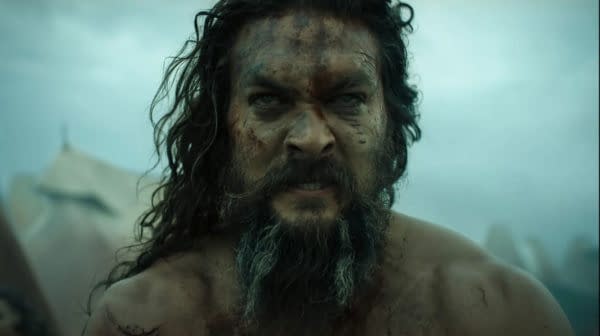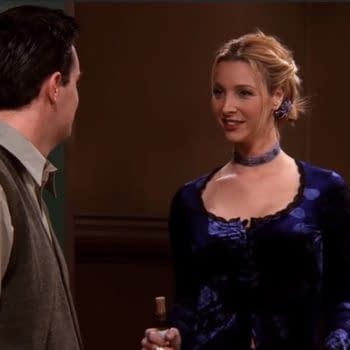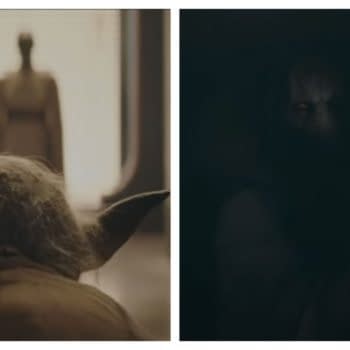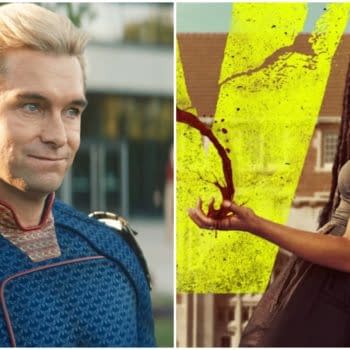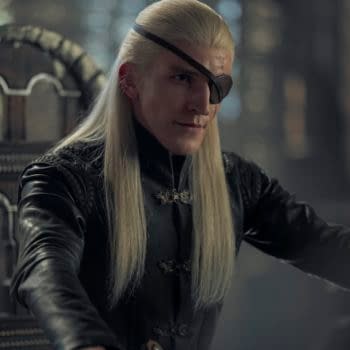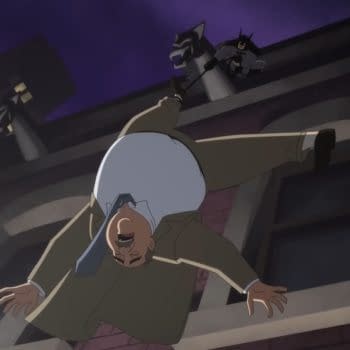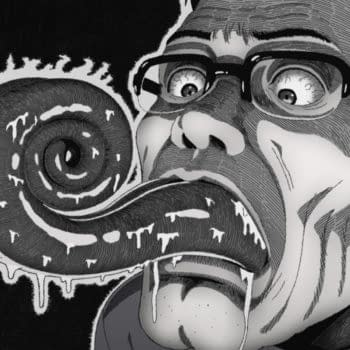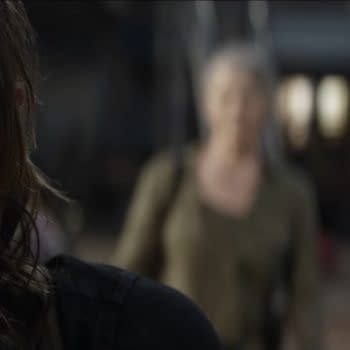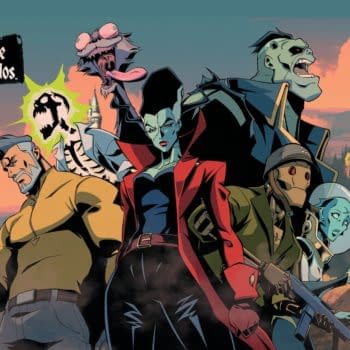Posted in: Apple, Review, streaming, TV | Tagged: apple tv, jason momoa, Review, season 3, See, steven knight, warrior
See Season 3 Review: Dystopian War Story Has Satisfying Finish
When Steven Knight conceived the dystopian world of See, where the bulk of the human race has lost sight and trying to find new ways to survive, it was a radical premise for its time. In true genre fashion, society regressed to tribal factions with the Payans and Trivantians, and fear of the unknown is still prevalent, especially when it's gotten used to its visually-impaired world. The sighted are largely considered heretics, who are to be burned as "witches," which presents a problem for the main protagonists, Baba Voss (Jason Momoa) and Maghra (Hera Hilmar). Their children Haniwa (Nesta Cooper) and Kofun (Archie Madekwe) are sighted. Season three moves on from Dave Bautista's Edo Voss and shifts to David Hewlett's Tormada as the primary villain. Tormada is threatening the Payan lands with bombs that can level whole villages.
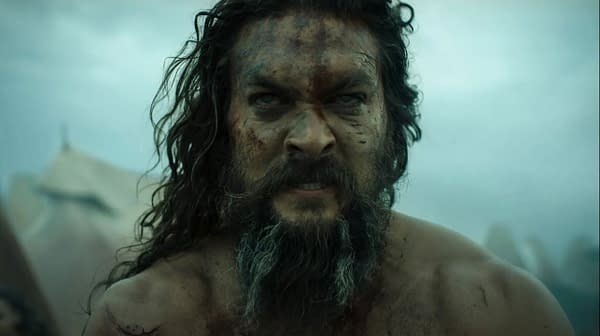
Those who follow the HBO Max series Warrior will also find tons of real-world crossover in the AppleTV+ series, including Olivia Cheng, Hoon Lee, and Dean Jagger. Not to mention, of course, one of the writers on See is Warrior creator Jonathan Tropper. There are several developing arcs in the season, from the origins of the bombs, the relationship between sisters in Maghra, and the tyrannical Sibeth, played by Sylvia Hoeks in her finest of the series yet. While we see Maghra constantly trying to develop as a leader, we see her psychopathic sister taking every opportunity to manipulate, murder, and survive to try to reclaim her crown.
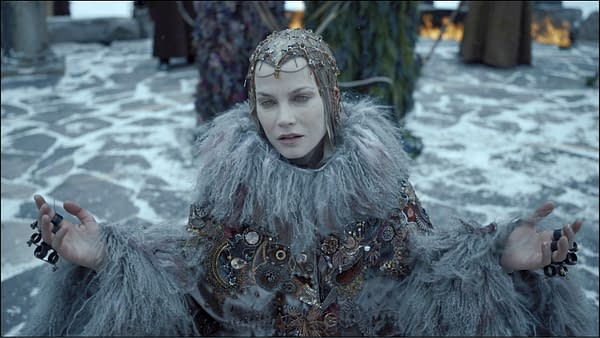
While See is largely an ensemble cast, the bulk of the heavy lifting is done by Momoa and Hoeks. Momoa's noble hulking brute in Baba perfectly contrasts Hoeks' ruthless politicking. While both seem like one-note characters, both have seen their share of vulnerability as there are instances where both find themselves helpless, yet they continued to persevere to the end. For self-preservation purposes, Sibeth seduced Kofun while she was imprisoned in season two and bearing a child. This garnered sympathy from her sister, who took over her crown in her place and kept her from extradition for her past crimes.
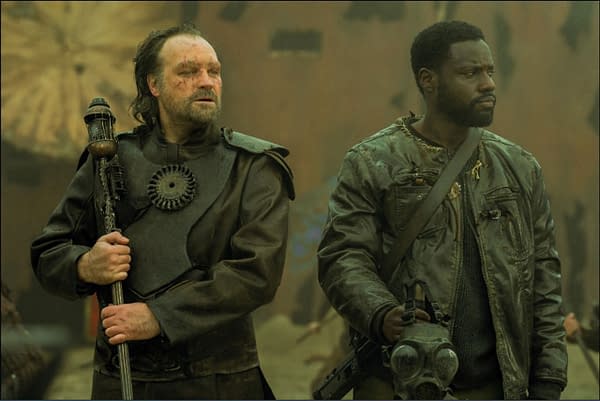
As far as villains go, Hewlett's Tormada reflects the show's biggest theme in the fear of change. In the series, he exploits those who can read and understand chemistry to form incendiary weapons. The wonton destruction ups the ante on See's already-brutal bellicose nature. It's a stark contrast to Bautista's Edo, who's an equally hulking figure like "brother" Baba. Hewlett's cold and calculating ways certain made him an intriguing antagonist worthy of Batman villain status.
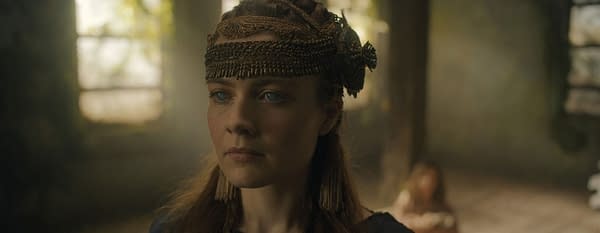
Season three also sees significant growth with Hilmar's Maghra, who reminds me of See's version of Sansa Stark finally embracing the destiny she was so often reluctant to take, no matter how naïve she perpetually was. If there was one presence sorely missed in season three, it was Alfre Woodard's Paris, who was the long-trusted friend and advisor to Maghra. While I understood the show's decision to move on from the character, it didn't drive the narrative but rather provided a shocking moment for surprise's sake.
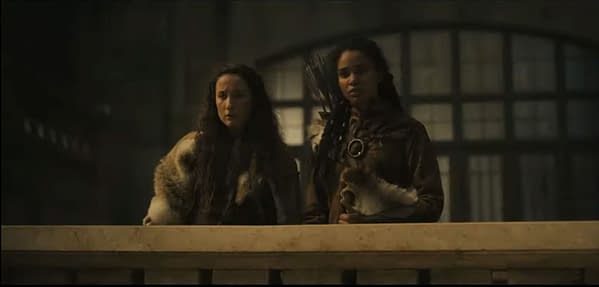
Another major developing arc in the series is Payan Princess Haniwa and Trivantian soldier Wren (Eden Epstein), who develop a star-crossed lovers arc without the Romeo & Juliette-type ending. Both also happen to be sighted, and the latter does her best to keep a secret. We do the occasional moments of levity between them while we aren't drowned by the continuous strife between the Payans and Trivantians. Honestly, I would have liked to have more scenes between them to break from the constant politics and combat because, many times, it's the nuance that helps separate shows from worthy epics to other genre shows stuck on their nihilistic themes. On that note, it would also be nice to see more scenes with Madekwe's Kofun learning to become a father rather than having to do it on the fly without any invaluable guidance from his own father, Baba.
One character that saw full redemption is Christian Camargo's Tamacti Jun, the witchfinder-turned-senior advisor to Maghra. Of all the war-weary characters, he possessed the most genuine growth as a flexible character driven by guilt to make things right, representing a bridge of tolerance and open-mindedness many of his peers lack. Another notable ally is Tom Mison's Lord Harlan, another central ally to Maghra, who's as charismatic as he's resourceful as he was on the Fox series Sleepy Hallow.
I'd be remiss not to mention See's epic fight choreography. It's not just the masterful one-on-one battles but advanced tactics implemented. An example is the show's use of sound as a way to spot targets in active combat, but also as traps. Many of the tactics used in the series are reminiscent of the popular Japanese Zatoichi franchise. Zatoichi, created by Kan Shimozawa, is the blind masseur and blade master.
Created by Steven Knight (Peaky Blinders), See's season three fulfilled its purpose to give Momoa a satisfying barbarian narrative he was only able to scratch the surface of when he starred in 2011's Conan the Barbarian and as Khal Drogo in Game of Thrones. Baba Voss was never meant to be a deep character but an everyman who tries to make peace with his past while coming to terms with his present to make penance for his family's future. While See isn't perfect as far as how dynamic, compelling narratives go, there are enough interesting characters and an outside-the-box from other epic war fantasies to be worth checking out.
